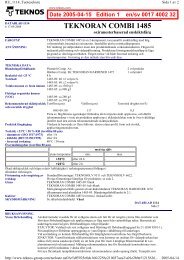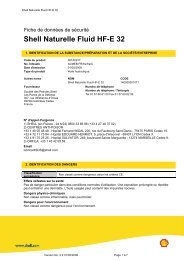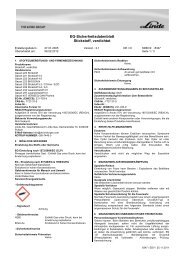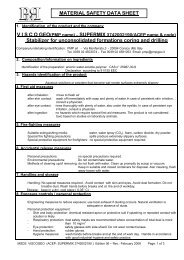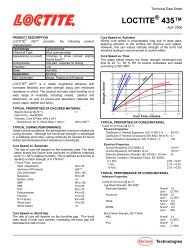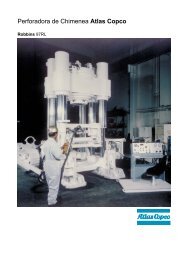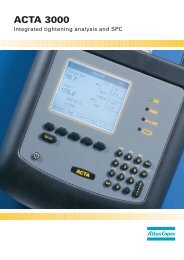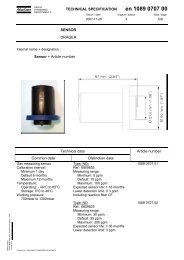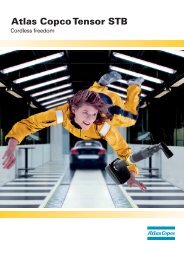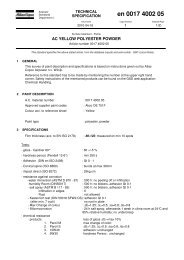Ergonomics - Atlas Copco
Ergonomics - Atlas Copco
Ergonomics - Atlas Copco
You also want an ePaper? Increase the reach of your titles
YUMPU automatically turns print PDFs into web optimized ePapers that Google loves.
Maximal capacity MVC for<br />
of individual fi ngers trigger<br />
Fingers Male Female operation<br />
Thumb 100 65<br />
Index 80 50 = sum of<br />
Middle 130 85 the maximal<br />
Ring 100 65 capacity of the<br />
Little 70 45 fi ngers involved<br />
Table 3.5 MVC for trigger operation in<br />
Newton (N). Practical values based on scientific<br />
results and experience.<br />
on, for example, chipping hammers, where<br />
force is also applied in the same direction as<br />
the feed force.<br />
Allowable load limits<br />
Load level consideration<br />
It should be noted that the above strength<br />
limit values are average maximum voluntary<br />
contraction (MVC) of normal operators. There<br />
are considerable physical variations between<br />
operators and ideally the MVC for the operator<br />
in question should be used. In industrial work<br />
there is a risk of musculoskeletal disorders<br />
when the load is higher than 30% MVC of the<br />
operator and at a load level of 40% MVC, blood<br />
circulation can be affected. For occasional tasks,<br />
the load level should be limited to 50% of the<br />
maximal force capacity of the operator and must<br />
not exceed 70% MVC. For highly repetitive<br />
work the load should be as low as 10-15% of MVC.<br />
Reduced MVC<br />
To determine the maximum allowable force<br />
limit for a specific action, one should refer to<br />
the maximal human force generating capac-<br />
ity data listed in Table 3.2 and 3.3. This<br />
capacity should then be reduced due to the<br />
speed of movement of the tool, frequency of<br />
operation and the total use (duration) of the<br />
tool per day (safety factors a 1 , a 2 , a 3 ).<br />
Safety factor a 1<br />
Speed of movement when<br />
performing the operation<br />
The maximal force generating capacity<br />
of muscles decreases when they contract<br />
rapidly, due to the viscous friction caused<br />
by the fluid viscosity of the muscle. The<br />
maximum force allowed should therefore be<br />
reduced in operations involving obvious fast<br />
movements. A safety factor of 0.8 may be<br />
used in such cases. In most cases assembly<br />
operations should be regarded as involving<br />
fast movements. Material removal opera-<br />
tions on the other hand normally do not<br />
involve fast movements.<br />
Type of operation Safety factor a 1<br />
No fast movements 1<br />
Fast movements 0.8<br />
Table 3.6 Safety factor a 1 to reduce MVC due to<br />
fast movements in the operation.<br />
79



